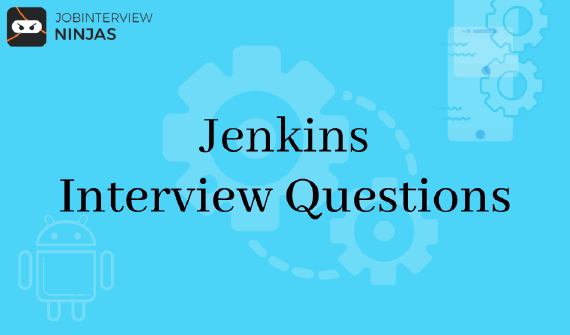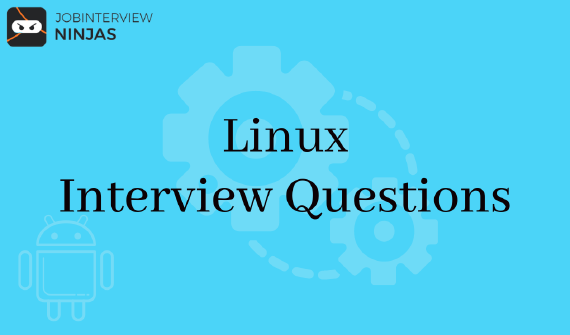
Top 40 Jenkins Interview Questions And Answers For Freshers/Experienced
If you are looking for a career in software development, then Jenkins is definitely worth exploring. This widely used …

If you are looking for PostgreSQL Interview Questions then you are at the right place. Here you will find the list of the top 40 PostgreSQL Interview Questions and Answers which are generally asked in job interviews. Freshers, experienced, and experts of all kinds of candidates can go through this article as it has all the types of questions for all level candidates. If you are specifically appearing for an SQL job interview then you should prepare from these PostgreSQL Interview Questions and Answers for a better understanding of SQL.
About PostgreSQL: Postgres is simply known as Postgresql in the SQL. PostgreSQL is a strong open source object-relational database management system that creates and uses the advanced and extended SQL language combined with many elements that safely store and work with complicated data. It is used in making a large web application.
2. Name some features of Postgresql?
3. Name various datatypes of Postgresql?
4. Tell me the objective of pgAdmin in PostgreSQL server?
6. Which are the techniques PostgreSQL uses to construct a new database?
7. Tell me the way to delete the database in PostgreSQL?
9. Name the different operators in PostgreSQL?
10. What is the name of database callback functions and what purpose does it serve?
11. Tell me the use of indexes?
12. Tell me the use of Cluster index?
13. What are the advantages of selecting data types in columns while making a table?
14. What do you require to update statistics in PostgreSQL?
15. What is the drawback of the DROP TABLE command in deleting entire data from a current table?
16. Tell me the way to delete the entire data from the current table?
17. Tell me the properties of a transaction in PostgreSQL?
18. What objective does the CTIDs field serve?
19. Name the commands used to handle transactions in PostgreSQL?
20. Differentiate between SQL and PostgreSQL?
21. How is security assured in PostgreSQL?
22. Tell the function of the Atomicity property in PostgreSQL?
23. Tell me the benefits of PostgreSQL?
24. What does Write-Ahead Logging do?
25. Name some data administration tools supported by PostgreSQL?
26. Tell me the way to store the binary data in PostgreSQL?
27. Explain the non-clustered index?
28. Tell me the objective of table space in PostgreSQL?
29. Tell me the disadvantages of PostgreSQL?
30. What is a token representation in a SQL Statement?
31. Explain Cube Root Operator (||/) in PostgreSQL?
32. How can we modify the datatype of the column in PostgreSQL?
33. Explain string constants in PostgreSQL?
34. Explain multi-version control in PostgreSQL?
35. Explain Indices of PostgreSQL?
36. Explain tokens in PostgreSQL?
37. Explain table partitioning in PostgreSQL?
38. How to start a database server in PostgreSQL?
39. Tell me the way to select the first 10 records in PostgreSQL?
40. Explain the base directory in PostgreSQL?
2. Name some features of Postgresql?
3. Name various datatypes of Postgresql?
Users can also make their indexes and get them indexed.
4. Tell me the objective of pgAdmin in PostgreSQL server?
6. Which are the techniques PostgreSQL uses to construct a new database?
7. Tell me the way to delete the database in PostgreSQL?
9. Name the different operators in PostgreSQL?
10. What is the name of database callback functions and what purpose does it serve?
11. Tell me the use of indexes?
12. Tell me the use of Cluster index?
13. What are the advantages of selecting data types in columns while making a table?
14. What do you require to update statistics in PostgreSQL?
15. What is the drawback of the DROP TABLE command in deleting entire data from a current table?
16. Tell me the way to delete the entire data from the current table?
17. Tell me the properties of a transaction in PostgreSQL?
18. What objective does the CTIDs field serve?
19. Name the commands used to handle transactions in PostgreSQL?
20. Differentiate between SQL and PostgreSQL?
21. How is security assured in PostgreSQL?
22. Tell the function of the Atomicity property in PostgreSQL?
23. Tell me the benefits of PostgreSQL?
24. What does Write-Ahead Logging do?
25. Name some data administration tools supported by PostgreSQL?
26. Tell me the way to store the binary data in PostgreSQL?
27. Explain the non-clustered index?
28. Tell me the objective of table space in PostgreSQL?
29. Tell me the disadvantages of PostgreSQL?
30. What is a token representation in a SQL Statement?
31. Explain Cube Root Operator (||/) in PostgreSQL?
PostgreSQL Cube Root Operator (||/) helps in getting the cube root of a number.
Example
SELECT ||/40 AS “Cube Root of 40”;
32. How can we modify the datatype of the column in PostgreSQL?
By using the change column type statement with ALTER TABLE command to modify a column type in PostgreSQL.
Example
ALTER TABLE table_name
ALTER COLUMN column_name [SET DATA] TYPE new_data_type;
33. Explain string constants in PostgreSQL?
It is a series of some characters that are seized by single quotes (').
Example
‘This is a string Constant’
34. Explain multi-version control in PostgreSQL?
35. Explain Indices of PostgreSQL?
36. Explain tokens in PostgreSQL?
37. Explain table partitioning in PostgreSQL?
38. How to start a database server in PostgreSQL?
39. Tell me the way to select the first 10 records in PostgreSQL?
Use the LIMIT command to select the first 10 records in PostgreSQL.
Example
select * from users order by name desc LIMIT 0, 10
40. Explain the base directory in PostgreSQL?

If you are looking for a career in software development, then Jenkins is definitely worth exploring. This widely used …

In this post, we will cover a few Linux interview questions and their answers. So, let’s get started. In this …